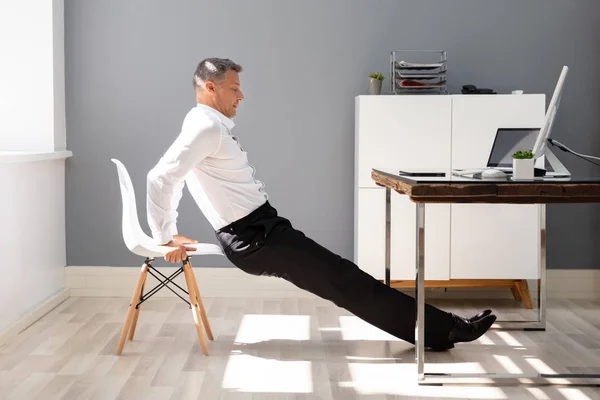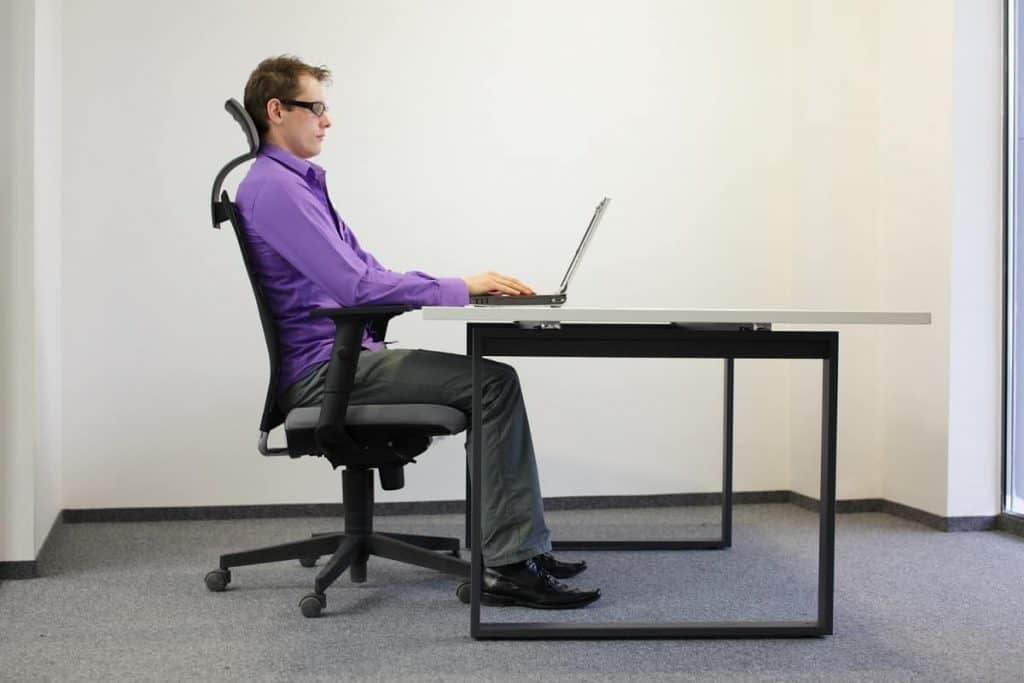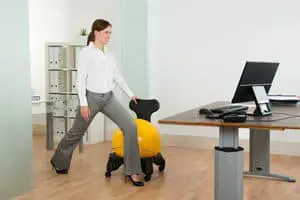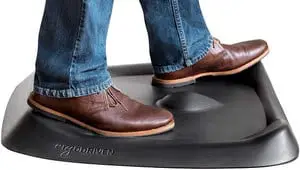What Does Ergonomic Mean?
We often hear the term ergonomics in the workplace and in the office. If you are wondering what ergonomics means and how it may benefit you, we will do our best to explain why ergonomics is important for you.
Ergonomics comes from the Greek word ergon, meaning work, and nomoi, meaning natural laws. At the core, ergonomics means the science of designing products to optimize them for human use.
More simply, ergonomics is about designing for humans or people use.
At Office Solution Pro, we are passionate about Ergonomics! Our readers support the page. If you click on a link, we may earn a small commission at no cost to you. We hope you love the products we recommend as much as we do!
The goal of ergonomics ranges from increasing productivity, maximizing efficiency, and reducing discomfort. Ergonomics takes into account the need for movement throughout the day. Oftentimes, office furniture is built traditionally to cause stiffness, poor posture, and little movement.
When you think about your office chair, think about the comfort of your lower back and how it may sometimes cause you pain.
Think about the height of your desk and the angle of your computer screen, and look back at how both your eyes and neck may be strained after a long day. Think about your keyboard and your mouse, and consider your wrist being in discomfort after long hours of typing.
This is why ergonomics is important for your long-term health. In this post, we will share with you the best examples of ergonomics in the workplace and how to set up an ergonomic workstation.
Understanding of ergonomics is the key to combatting the negative effects of a sedentary lifestyle in the workplace.
Watch This First:
If you’re short on time, you can watch the video below. It is a simple visual presentation of the basic guidelines to set up the proper ergonomic workstation. Once you set up your desk the right way, we can go further in-depth on incorporating important ergonomic tips in the office.
Examples of Ergonomic Hazards in the Workplace
It’s important to quickly identify and remedy potential ergonomic hazards in your office. Prioritizing the proper posture can help prevent most workplace injuries and reduce the impact of repetitive movements.
You can do this by adjusting certain tools that you use in the office. These are some of the most common ergonomic hazards in the workplace.
1. Chairs
A poorly designed office chair can contribute to a series of problems for the user, including lower back pain, fatigue, abdominal cramps, and, worse yet, deep vein thrombosis in the legs.
When choosing to invest in a chair, it’s best to choose an ergonomic office chair that has adjustable features. The best ones provide proper height, width, and size adjustments. Not to mention, most will provide a clean and modern design — the perfect combination of form and function!
2. Carpal Tunnel Syndrome
Carpal tunnel syndrome is an injury that affects the hands, wrists, and fingers. It affects the muscles, nerves, and tendons as a result of repetitive and strenuous motions.
Office workers who type on keyboards, while operating mouse devices for hours are prone to sustain such injury. We suggest investing in the right ergonomic keyboard and mouse devices to protect your hands.
3. Heavy Lifting
This is a common theme with workers involved in manufacturing. Examples of ergonomic hazards in manufacturing are very serious issues. Due to the intense load and pressure, heavy lifting without proper form can injure your back, knees, and legs.
Be careful when dealing with heavy supplies, files, and books in the office. Never over-extend yourself and use footstools to reach high shelves.
4. Lighting
It’s nearly impossible to provide proper lighting that is suitable for everyone. Artificial lighting may hinder a worker’s productivity and comfort simply because it is too bright or too dim. The most common problem in the office is dealing with the glare from computer screens.
These ergonomic challenges arise from different factors, such as different seasons and the position of office windows and skylights. All of these factors can contribute to eye strain, headaches, and, worse yet, nausea.

Best Examples of Ergonomics in the Workplace
The question then is, how to improve ergonomics in the workplace? There are many things you can implement today to achieve it — we’ve compiled the most important ones for you.
1. Find Your Natural Posture
Maintaining a neutral posture simply means aligning and balancing the body while either standing or sitting. This posture lets your joints align naturally to reduce strain and stress on your muscles, tendons, and overall skeletal system. A few things to keep in mind are:
- The Head is level with the screen
- Back is supported properly
- Shoulders are relaxed
- Hands, wrists, and forearms are parallel to the floor
- Elbows are close to your body
- Thighs and hips are parallel to the floor
- Feet firmly on the ground
2. Adjusting Your Keyboard and Mouse
Oftentimes, the biggest culprit of bad posture is the simple tools you use for work. Keyboards and mouse devices are often neglected by many but are essential in workplace ergonomics.
Be sure to properly position your mouse next to your keyboard. If you are left-handed, use a left-handed mouse. This will ensure that the device can naturally fit the palm of your hands.
We advise you to carefully select the right ergonomic keyboard and mouse devices to avoid unnecessary strain on your hands.
3. Adjusting Your Screens
As a general rule of thumb, the top of your monitor should be at your eye level — with at least 20 inches of space away from your face. The goal is to maintain a relaxed neck and shoulders, where you should be able to read comfortably without constantly adjusting your posture or moving your head.
You may need to adjust your posture if there is a glare on your screen due to poor lighting. Arrange your desk to minimize glare, especially from lights and windows, to reduce eye strain and headaches.
4. Adjusting Your Chair
An ergonomic office chair aligns and supports your entire body — particularly your back, arms, legs, and buttocks — in a way that helps reduce stress and keeps your body relaxed.
Every human body is different; therefore, the best option is an office chair with various adjustability, as it allows you to set a neutral posture and keep your body comfortable throughout the day.
When buying an office chair, it’s important to remember that the right office chair has the right lumbar support. Lumbar support will appropriately support your lower back and your spine.

5. Don’t Sit Around All Day – Stand Up and Move!
Last but not least, the best thing you can do to ensure proper workplace ergonomics is to stay active and move around. Humans are not designed to sit around and slouch all day, we advise you to stand up, stretch, and move around every once in a while.
We have a comprehensive guide for you on how to exponentially increase energy, focus, and productivity through unique ergonomic stretches and exercises, so be sure to read it and apply it.
Ultimately, you want to work comfortably without fatigue in your joints and muscles. Make sure to take proper care of your body and environment while avoiding common pitfalls in ergonomics, and you’ll be sure to have a pleasant day in the office every day!






